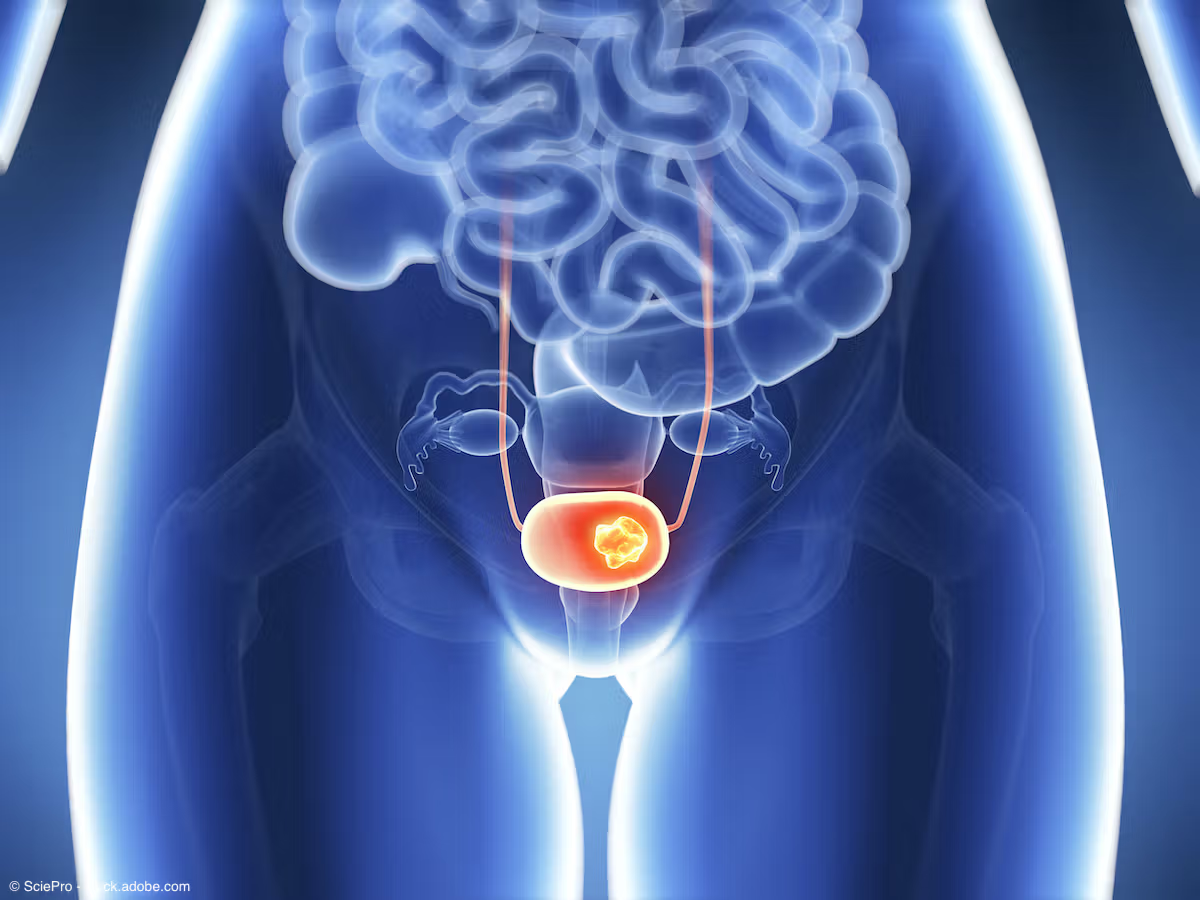News
Article
FDA approves durvalumab/chemo for muscle–invasive bladder cancer
Author(s):
Key Takeaways
- The FDA approved neoadjuvant durvalumab with gemcitabine and cisplatin, followed by adjuvant durvalumab, for muscle invasive bladder cancer (MIBC).
- Phase 3 NIAGARA trial results showed improved event-free survival (EFS) and overall survival (OS) with the combination therapy versus chemotherapy alone.
The approval is supported by results from the phase 3 NIAGARA trial.
Today, March 28, 2025, the FDA approved neoadjuvant durvalumab (Imfinzi) in combination with gemcitabine and cisplatin, followed by adjuvant durvalumab monotherapy following radical cystectomy, for adult patients with muscle invasive bladder cancer (MIBC).1
The dual primary end points were EFS and pathological complete response.

“This approval for the durvalumab-based perioperative regimen is a major breakthrough for people with muscle-invasive bladder cancer, nearly half of whom see their cancer return despite chemotherapy and surgery with curative-intent," said Matthew D. Galsky, MD, of the Icahn School of Medicine at Mount Sinai in New York, in a news release.2 "This durvalumab regimen significantly extended patients’ lives in the NIAGARA trial and has the potential to transform care.”
The approval is supported by results from the phase 3 NIAGARA trial (NCT03732677), which showed that perioperative durvalumab plus neoadjuvant chemotherapy extended event-free survival (EFS) and overall survival (OS) vs neoadjuvant chemotherapy alone.3
At 24 months, the estimated EFS was 67.8% (95% CI, 63.6 to 71.7) in the durvalumab arm vs 59.8% (95% CI, 55.4 to 64.0) in the control arm (HR, 0.68; 95% CI, 0.56 to 0.82; P < .001). The median EFS was not reached in the durvalumab arm and was 46.1 months (95% CI: 32.2, NR) in the chemotherapy arm. At a median follow-up of 42.3 months, 35.1% of patients in the durvalumab arm and 46.4% of patients in the control arm experienced an EFS event.
The estimated 24-month OS was 82.2% (95% CI, 78.7 to 85.2) in the durvalumab arm vs 75.2% (95% CI, 71.3 to 78.8) in the control arm (HR, 0.75; 95% CI, 0.59 to 0.93; P = .01). The median OS was not reached in either arm.
Pathological complete response (pCR), the trial’s second primary end point, was not significantly different between both arms. Specifically, the pCR rate was 33.8% (95% confidence interval [CI], 29.8 to 38.0) in the durvalumab arm vs 25.8% (95% CI, 22.2 to 29.8) in the control arm (RR, 1.30; 95% CI, 1.09 to 1.56; P = .004).
Regarding safety, adverse events (AEs) were comparable between both arms.
Grade 3-4 AEs occurred in 69.4% of patients I nthe durvalumab arm and 67.5% of patients in the control arm. Grade 3-4 treatment-related AEs were reported in 40.6% and 40.9% of patients, respectively.
The authors also reported, “Radical cystectomy was performed in 88.0% of the patients in the durvalumab group and in 83.2% of those in the comparison group.”
In total, the open-label NIAGARA trial enrolled 1063 adult patients with cisplatin-eligible MIBC who were candidates for radical cystectomy and had not received prior systemic therapy for bladder cancer. Participants were randomly assigned 1:1 to receive neoadjuvant durvalumab plus gemcitabine-cisplatin every 3 weeks for 4 cycles followed by radical cystectomy and adjuvant durvalumab every 4 weeks for 8 cycles (n = 533) or to receive neoadjuvant gemcitabine-cisplatin followed by radical cystectomy alone (n = 530).
The dual primary end points were EFS and pathological complete response. OS was a key secondary end point.
In the news release on the approval, the FDA advised, "The recommended durvalumab dose for patients with a body weight of 30 kg [or greater] is 1,500 mg every 3 weeks with chemotherapy (neoadjuvant treatment) and 1,500 mg as a single agent every 4 weeks (adjuvant treatment). The recommended durvalumab dose for patients with a body weight [less than] 30 kg is 20 mg/kg with chemotherapy every 3 weeks (neoadjuvant treatment) and 20 mg/kg as a single agent every 4 weeks (adjuvant treatment). Treatment should continue until disease progression that precludes definitive surgery, recurrence, or unacceptable toxicity or a maximum of 8 cycles after surgery."
REFERENCES
1. FDA approves durvalumab for muscle invasive bladder cancer. News release. US Food & Drug Administration. Published online and accessed March 28, 2025. https://www.fda.gov/drugs/resources-information-approved-drugs/fda-approves-durvalumab-muscle-invasive-bladder-cancer
2. IMFINZI (durvalumab) approved in the US as first and only perioperative immunotherapy for patients with muscle-invasive bladder cancer. News release. AstraZeneca. Published online and accessed March 31, 2025. https://www.astrazeneca-us.com/media/press-releases/2025/IMFINZI-durvalumab-approved-in-the-US-as-first-and-only-perioperative-immunotherapy-for-patients-with-muscle-invasive-bladder-cancer.html
3. Powles T, Catto JWF, Galsky MD. Perioperative durvalumab with neoadjuvant chemotherapy in operable bladder cancer. N Engl J Med. 2024;391:1773-1786. doi:10.1056/NEJMoa2408154

















